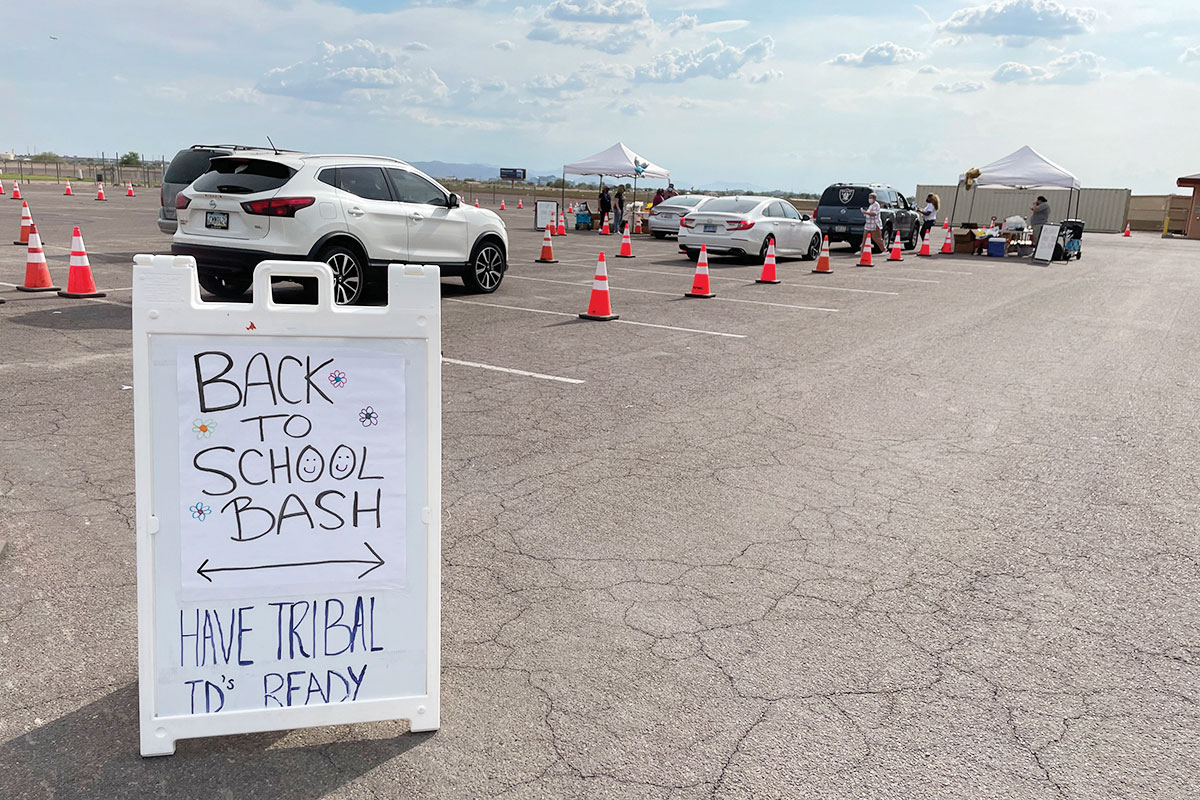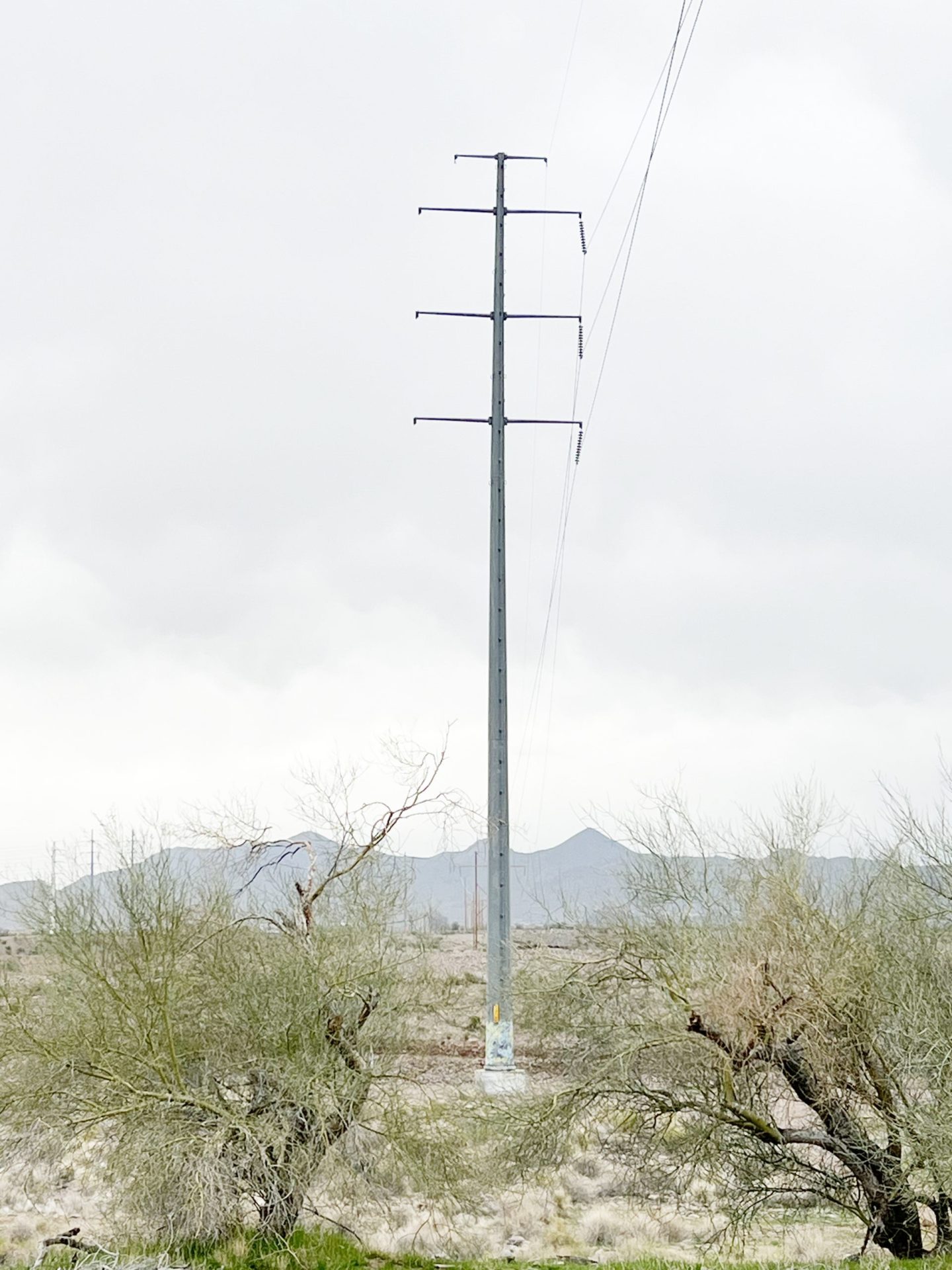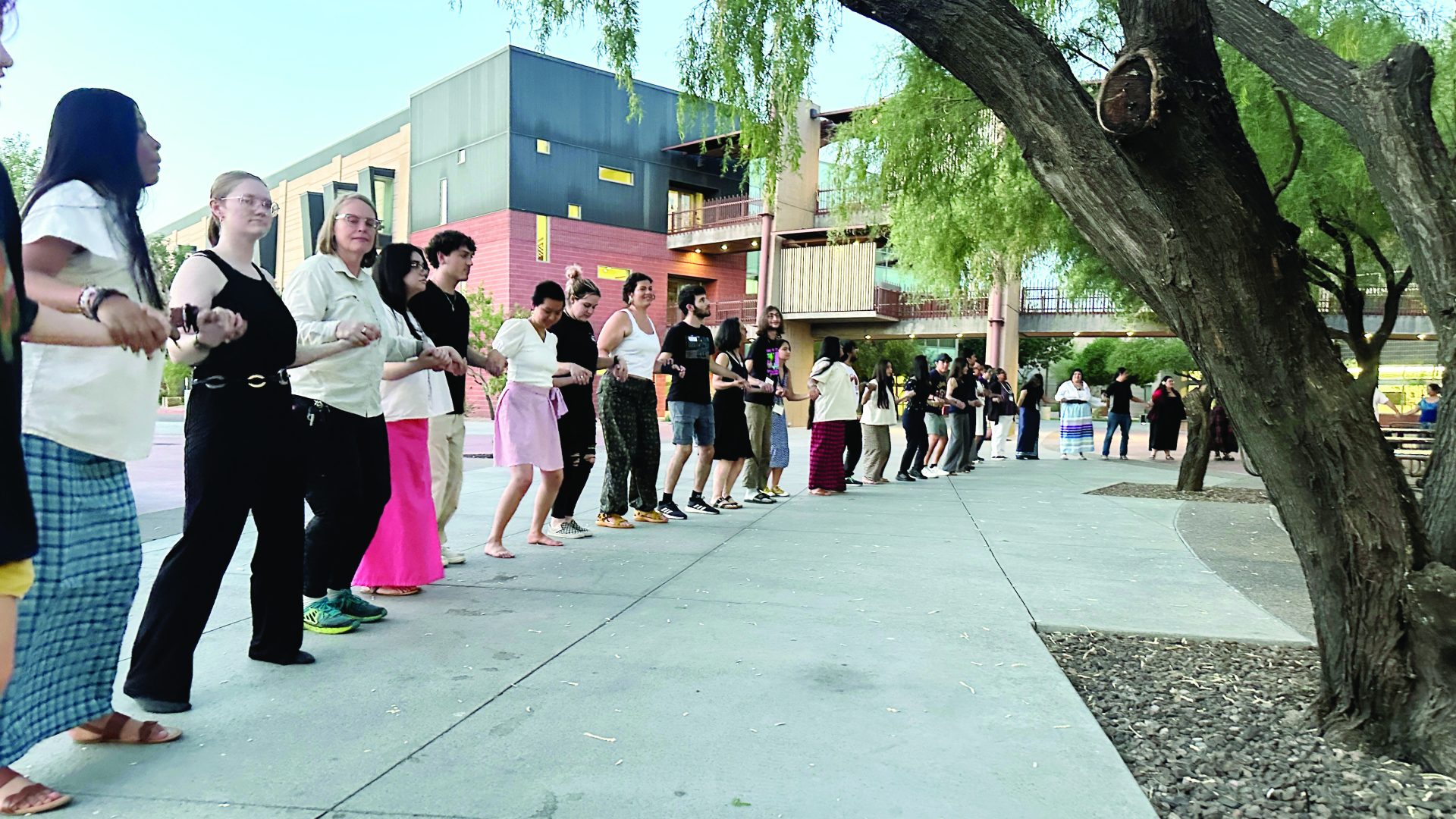VIEWS: 3038
October 15, 2020Cultural Resources Department Repository Beam Signing Ceremony
On Thursday, September 24, the Salt River Pima-Maricopa Indian Community’s Cultural Resources Department (CRD) held a beam-signing ceremony for the highly anticipated Repository and Native American Graves Protection and Repatriation Act (NAGPRA) buildings. The ceremony was limited to a small number of guests due to the COVID-19 pandemic, but an acceptable number of CRD, Public Works and Engineering and Construction Services (ECS) employees, general contractors and architects attended.
The two new buildings are located behind the old Salt River Day School at Longmore and McDowell roads and are set to be completed in the summer of 2021. The Repository measures 24,562 square feet and will include administrative and museum staff support areas, collection space for museum artifacts, Community Relations storage, large rooms for permanent collections, special archive rooms, processing rooms, and two conservation laboratories for preparation of items and archeological artifacts. The NAGPRA building is a 2,644-square-foot facility that includes a processing room, two collection spaces and a suite for use during reburial ceremonies.
Construction of the Repository is under the direction of ECS and the CRD and began in early March. General contractor MayDall Construction and architect ADM Group are team-building the new facility.
“All the walls have been erected, and once we get all the steel on, then we start drying the building in, so we’ve done quite a bit to get to this point,” said David Dallas, president of MayDall Construction on the progress of the construction. “It’s going to be a really beautiful piece of art for the Community, and I hope everyone enjoys it for many years to come.”
During the Repository beam-signing ceremony, SRPMIC Vice-President Ricardo Leonard and staff from the CRD talked about the significance of the two buildings and how they will benefit the preservation of the Community’s history.
“It is with great joy [that we] see this structure coming to a point to say that it’s actually here,” said Leonard. “We’ve been looking for a place to house the remains of our ancestors and get them ready [for reburial, as well as to house any cultural artifacts found]. It gives me great joy to know that this is where everything is going to be.”
Leonard gave his thanks to all those who were involved and made this building happen. It has been something that has been talked about for a long time.
“I am thankful to Council and the Community, and all the work that everyone has put into these buildings. I am so grateful that the timing was right on this project,” said CRD Director Kelly Washington about the continuance of the project during the COVID-19 pandemic. “We put a lot of work into this. Our main priority in designing this [repository] was function. It’s not a major public facility that hundreds of people are going to be visiting every day; it’s a building for the ‘back of the house’ of what we do every day. We know it’s a foundation that we require for what we do.”
Washington thanked ECS for their work providing what functions were needed and wanted in this building.
“This new building will allow us to [repatriate remains of our ancestors] that are currently housed elsewhere, such as in a federal repository,” said CRD Tribal Historic Preservation Officer Shane Anton about the purpose of the NAGPRA. “Our deceased are really important to us and always have been. I want to thank Council for their support. When we told them we needed a better facility for NAGPRA work, I don’t think anyone questioned it; no one countered, they [simply asked] ‘What can we do to help?’ We’re really lucky here in Salt River to have the makeup that we do from our Council, Administration, [department] directors, to the employees who are sweeping and mopping the floors. We are all equal in the eyes of the Creator. That is why I am appreciative to see everyone here today to sign the beam so that we can have a good functioning facility that [will help us] maintain our cultural heritage and past.”
After all the speeches, guests had the opportunity to sign the steel beam that will be placed on the building at a future date. Guests were given a walking tour of the site, learning about how the contractors and architects implemented design features such as sandwich panels on the exterior walls and grinding the concrete to bring out the rocks, echoing the rocks at the bottom of the river.
Once the Cultural Repository and NAGPRA buildings are completed, the Cultural Resources Department plans to begin renovations to the old Day School for it to become the new home for the CRD. That way the Cultural Resources Department will operate all its programs and services from this single central location.
For updates and progress on the Repository and other CRD news, visit the CRD’s Facebook page at facebook.com/saltrivercrd or on Instagram at www.instagram.com/saltrivercrd/.












